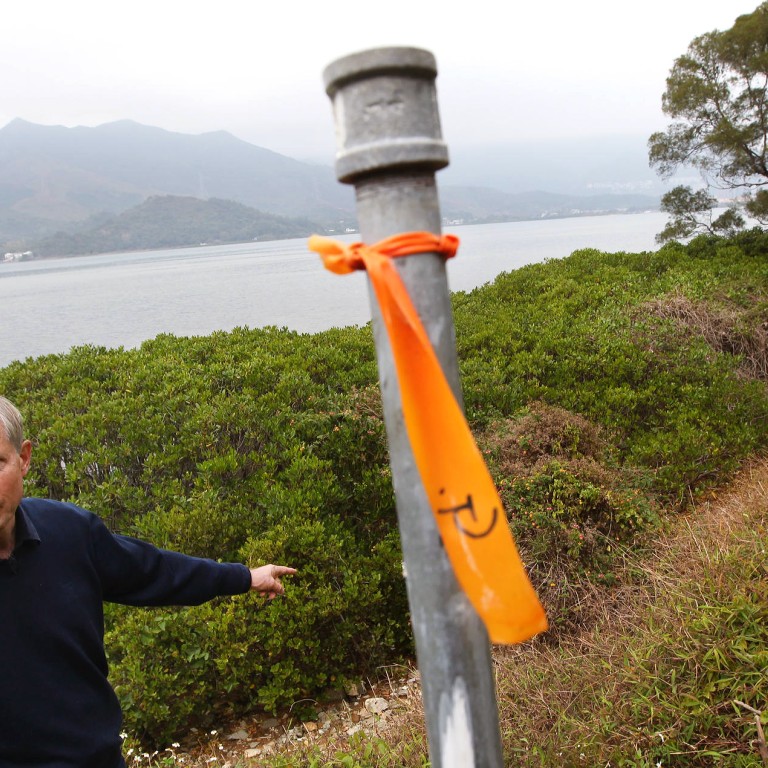
Country park building plan cuts off coastal family trail
Path lies under proposed village house, and with the sea on one side and a steep slope on the other, walkers would hit a dead end
A trail popular with families looks set to be blocked off if officials give the green light to a village house proposal within the Plover Cove Country Park in the northeastern New Territories

The Agriculture, Fisheries and Conservation Department, refused to comment, saying the proposal - filed with the Lands Department in late 2012 - had not been submitted to it.
With the government recently incorporating more villages into the country park areas, the issue of private land rights in the city's beauty spots has been subject to heated debate. Earlier this year, Tai Long Sai Wan residents blockaded another footpath in protest against plans to incorporate their village into a Sai Kung country park.
It is not known who the applicant for the Luk Keng house is but, according to the Lands Registry, the site is owned by a Chu Man-yuk, who was gifted the property in 2012 by Chu Hon-keung, who has a registered address in Britain.
The Lands Department said that the case was still under consideration.
A previous application for a village house in the same locality was approved by the department in 2004 after meeting no objections from the Country and Marine Parks Board, which has to approve development within protected areas.
However, during a meeting of the board at the time, concerns were expressed that the trail might be blocked off. The minutes show the District Lands Office assured members that the trail would be rerouted.
That village house has never been built.
The applicant, Chu Man-chong, who gave the same address as Chu Man-yuk, has sought a land exchange and has paid the fee to extend the three-year completion deadline more than once.
Butcher said he could not see how the seaside footpath could be preserved without land reclamation. The proposed house was just several feet from the sea during high tide, he added. Starling Inlet remains a restricted area because of its proximity to the mainland border.

Chu Wai-kuen, the village representative said he was unaware of the building application but believed that something had to be done to reroute the trail. "They should build a road along the coast to bypass the private land," he said.
Tsang Yuk-on, who sits on the Sha Tau Kok Rural Committee, said private landowners' rights should be respected, even when they had offered access through their properties in the past.
He said the North District Council was considering building a HK$20 million causeway along the coast that would connect neighbouring Fung Hang village with the northern section of the family walk.
Dr Ng Cho-nam, a parks board member, said it was an unfortunate dilemma that the trail fell on private land. "This is a frustrating situation," he added.
He believed that the property owner might be obliged to find an alternative path under legal provisions on rights of way, which guarantee public access where that access has been available for a certain period of time.
Plover Cove Country Park was designated in 1979. It is not known how old the trail is. There are hundreds of small houses within country parks, and private land is believed to be spread over 19,000 lots, covering 460 hectares.
